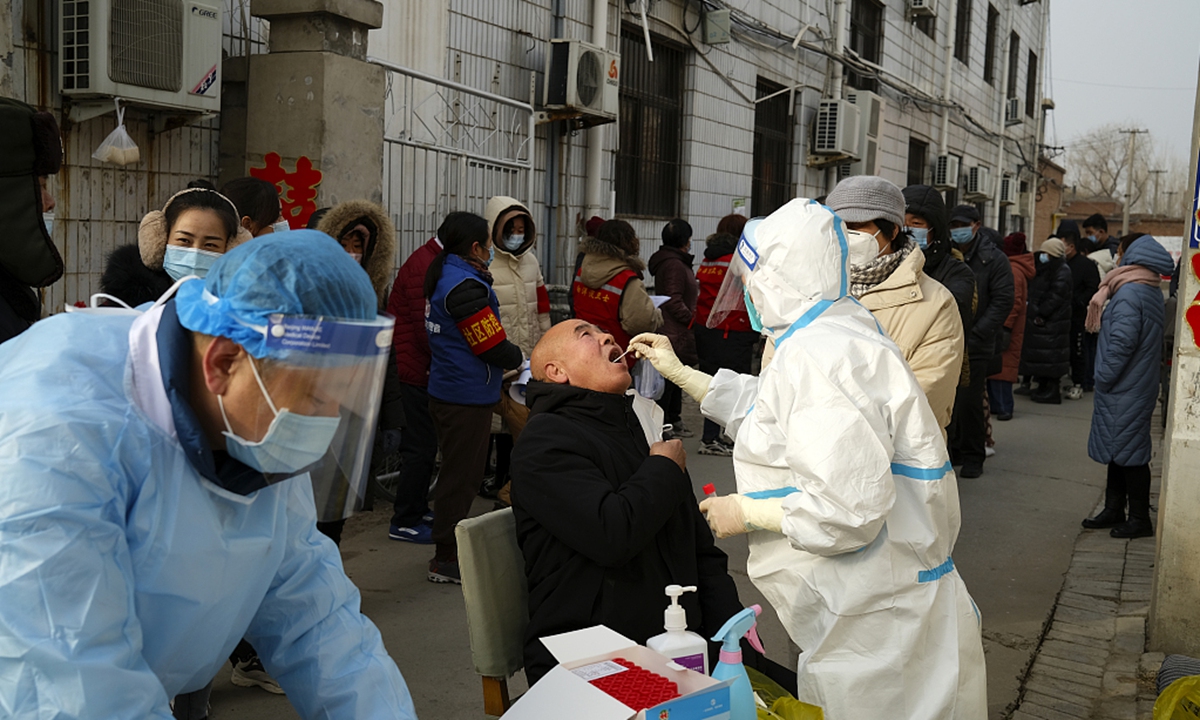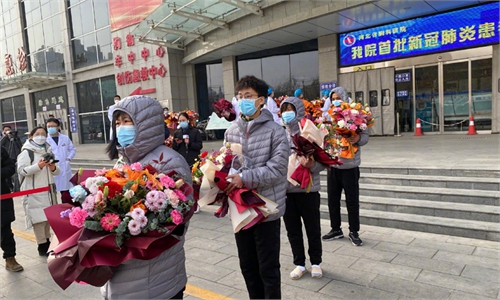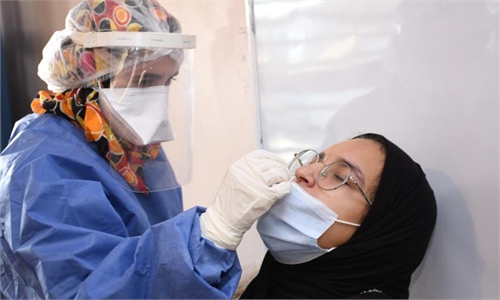
Residents in Xiongan New Area, North China's Hebei Province queue up for nucleic acid tests on January 14. Photo: VCG
The latest wave of the coronavirus epidemic in China is fierce. North China's Hebei Province and Northeast China's Heilongjiang Province have become the hardest-hit regions. The overall situation in North China is pressing.However, with the experience accumulated in the battle against the virus over the past year, as well as the already established systematic prevention and control network in place, most Chinese people are confident that the scenario seen last year will not reappear.
Coronavirus outbreaks in many countries in the northern hemisphere are reaching their peak. According to the latest reports, the UK records more than 1,300 coronavirus deaths in one day, while the single-day death toll in Germany and the US are over 1,000 and 4,400.
The figure in China is with an order-of-magnitude difference from that of the US and European countries. Chinese society has already formed its own medical and psychological standards of judgment over the jeopardy of COVID-19.
No matter how other countries will fare this winter, it is hoped China's anti-epidemic fight can reach the following results.
First, detecting sporadic infections as early as possible, taking timely prevention and control measures, and avoiding the large-scale outbreak Wuhan experienced last year. Regions with localized outbreak should take quick actions to block and suppress the spread of the virus in a short period of time by testing all local residents, in an attempt to prevent a domino effect.
This time, several rural areas have become the sources of the outbreaks, which exposed the weak link of epidemic prevention and control there. This loophole must be closed.
Second, it is necessary to boost the accuracy of this round of anti-epidemic fight. While taking necessary and adequate measures, it is also needed to maintain normal social life and to reduce the interruption of public life in non-medium/high-risk areas. This should be a vital consideration in the decision-making process. China's experience, as well as the prevention and control system, has given us the ability to narrow down the scope of implementing a one-size-fits-all strict approach. This is to protect people's livelihood and the economy at the same time.
Third, the prevention and control measures must be firm and scientific, but at the same time humane. In medium- and high-risk areas, work should be carried out in a meticulous and earnest manner, avoiding being done brutally as it was in some places last winter and spring. We hope the anti-epidemic work this winter in all regions will be both highly effective and humane to achieve a harmonious prevention and control.
Fourth, after one year of exploration, Chinese society has reached a growing consensus on the country's prevention and control routes. It's hoped this consensus can warm this winter and decrease controversy over the virus fight in public opinion both online and offline. The situation in Wuhan last year triggered several rounds of fierce public opinion controversy, which not only exposed the problems existing in the early work against the epidemic by some agencies and departments, but also indicated people's anxiety at that time. Nowadays, China's anti-epidemic work has become more mature, and most Chinese people are confident that the epidemic will be controlled no matter how severe it is. All kinds of difficulties that we are facing are temporary, and we have been in unprecedented solidarity.
The COVID-19 pandemic is a test to the entire world. China's political system with its strong mobilization capability is the mainstay of the anti-epidemic fight, while the Chinese public has the will and consciousness to cooperate in the prevention and control work. This means we are sure to win the fight against the epidemic this winter. The Western standard shouldn't be used to judge whether we can win. What's most important is the yardstick in Chinese people's minds.
For instance, in major European countries whose population is similar to that of a province in China, a daily increase of 80 to 100 COVID-19 cases is regarded as a well-controlled situation. But in China, it's serious. China's prevention and control should meet the high demands of the public for health protection. At the same time, the Chinese economy and social life cannot be disrupted by the anti-epidemic fight. This is the goal that all regions across the country should strive for.
A socialist China should do its best to curb the epidemic. The Chinese people have high requirements. These requirements are also yardsticks to judge right and wrong, superiority and inferiority.



